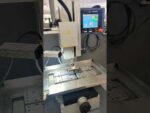Designing for Future Business Growth, a History Lesson
How Industrial Design emerged through the Great Depression and the benefits it may yield in today’s troubling economy.
 Raymond Loewy Cover of Times (October 31, 1949) and Steve Jobs Cover of Times (April 12, 2010)
Raymond Loewy Cover of Times (October 31, 1949) and Steve Jobs Cover of Times (April 12, 2010)
The need for an increase in innovative product design has become ever more important given the current economic situation. Looking back into our history and adapting the lessons from the past could help solve the problems of today. Industrial design owes it’s beginnings to the increasing need for a competitive edge in the market place in a time when unemployment was astronomical and the need to influence consumer growth was vital to the countries turn around. The main problem with this approach is that many companies find it hard to “quantify design value” when looking at their financial reports (4). However, companies like Apple have sustained growth through the worst recession since the great depression and continued to grow as a result of understanding user’s wants and needs and encapsulating those desires in their products (1). They have embraced Industrial design as an asset in their company and it has contributed to some of the world’s most recognizable product aesthetics. Many companies looking to cut costs turn to their financial analysts and make cuts in areas that may be the best asset to their companies’ growth. In an article discussing the do’s and don’ts of a recession, many mistakes companies make are cutting top talent and slowing new product development (2). So if the past is any lesson of challenges we face in the coming years, then many companies must push forward in product innovation, technology and growth to regain traction on the road ahead or risk being left behind when times get better (2). In striving ahead, there is key importance in acknowledging the needs and wants of people. During their respected times, Raymond Loewy and Steve Jobs pushed the idea of modernism and gave their products the aesthetics that people desired and felt a need to have. This must continue on all levels of design. In a Business Week interview, Davin Stowell, a founder of Smart Design, discusses the importance of products standing out from the crowd and how everything from expensive electronics to “potato peelers” are critiqued and discussed on social media and online reviews (3). There will and must be a need for all levels of designers and companies to increase industrial design influence in there new product development and for those products to create an emotional and lasting attachment to their users. It is the responsibility of designers and companies to continually adapt to the changing desires of the consumer markets and understand the need to take risks in benefiting the community as a whole.
References:
- http://ezinearticles.com/?The-Apple-Success-Story&id=4387101
- http://www.businessweek.com/innovate/NussbaumOnDesign/archives/2008/01/10_worst_innovation_mistakes_in_a_recession.html
- (Design in a Recession) http://tunein.com/radio/BusinessWeek—-Innovation-of-the-Week-podcast-p192180/
- http://www.idsa.org/content/content1/design-value-strategy-business-success






